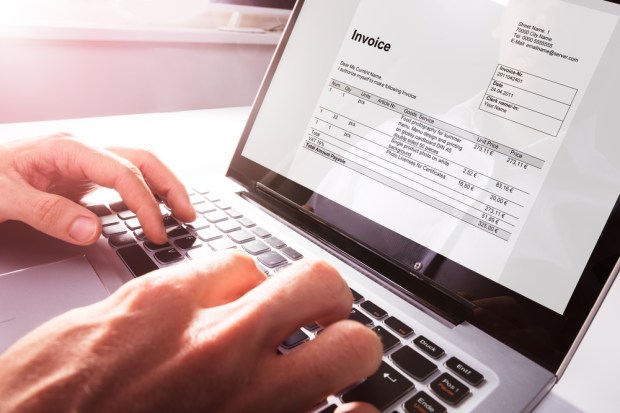Corporates Shouldn’t Wait For Regulators To Force eInvoice Adoption

For much of the world, electronic invoicing is taking off — not only for the benefits it offers, like enhanced cash flow visibility, but largely because jurisdictions are implementing eInvoicing regulatory requirements to crack down on tax evasion.
These legislative initiatives are why Latin America, a market not necessarily known for its FinTech innovation, has one of the strongest penetrations of eInvoicing in the world. Europe and Australia, too, have eInvoicing mandates in place. The U.S., however, is a different story. Data from FEDmanager estimates that of the 19 million invoices issued in the U.S. every year, less than half are electronic. Without a regulatory requirement (so far), eInvoicing simply isn’t top of mind for many U.S. firms, said Jared King, founder and CEO of accounts receivable firm Invoiced.
“A lot of businesses here want to adopt eInvoicing, but it’s hard. The fact that there are no regulations that require them to do so means it pushes eInvoicing lower on the to-do list,” King told PYMNTS in a recent interview. “I think what’s really driving [eInvoice adoption] is customer demand.”
Customers, be them businesses or consumers, show increasing preference for a digital invoice, he noted. It’s an emerging trend, for B2B invoices in particular, as corporate billing and payments become “consumerized,” King said, adding that customers of all types today expect a digital experience, and those preferences are spilling into the B2B market as well.
“People are no longer comfortable having a paper invoice,” he said.
The customer voice isn’t only influencing how an accounts receivable (AR) department issues invoices, either. King said payers are calling for better ways to pay.
However, both legal requirements and customer preference can emerge as top barriers to global growth for businesses that are struggling to ensure their eInvoicing practices remain compliant and gain traction as they expand across borders. Take credit cards, for instance. While card payments are a popular way to pay digital invoices in the U.S., customers in Europe more often prefer to pay via bank account transfers, King said. (This is why Invoiced recently struck a partnership with GoCardless, a European firm enabling Direct Debit transfers).
Failing to offer payment rails that local customers prefer, and failing to meet the nuances of individual markets’ regulatory requirements, can prevent a business from entering new markets, or lead to fines or lost customers. King explained that, typically, businesses take a manual, friction-heavy approach to deal with these challenges.
“Traditionally, businesses adopt solutions for each individual country they operate in,” he said. “That could mean 10 different billing or ERP systems, where there’s really no centralization. It’s an operational challenge we see across the board.”
Adequately addressing these hurdles, however, can significantly ease the friction of expanding across borders. The benefits outweigh the burden of implementation, King said, and companies may be making a mistake by failing to prioritize adoption. The benefits to the technology are vast, and go beyond the obvious like improved cash flow management and saved money. According to King, some of the biggest opportunities in eInvoicing exist in the data digitization offers.
“Having all of this data is benefitting companies. Finance teams are adopting machine learning technology across all facets of financial operations, and that applies to billing as well,” he said. “You may have hundreds or thousands of invoices per month you’re dealing with — you can’t just keep that in your head.”
Technology can use that data to make more accurate predictions about cash flow, or identify a particular customer at risk of a late payment.
Electronic invoicing’s potential to address late payment issues is a particularly strong selling point. Using eInvoicing data to see which customer has viewed an invoice and when, as well as past payment history, can provide a more accurate prediction of future payment behavior. Plus, recent research from eKEPLER found that it takes an average of 55 days for a paper invoice to be paid — a time frame that gets cut to 10 days when businesses implement an eInvoicing solution.
King noted that eInvoicing data can also guide businesses in their contractual agreements with corporate customers. Customers with a history of late payments, for instance, may prevent a supplier from lengthening payment terms.
“These eInvoicing systems can make a huge impact on cutting down on late payments,” he explained. “It’s about having better payment mechanisms, being able to accept electronic payments and being faster than waiting for your customer to cut you a check.”
Businesses across Europe, Latin America, Australia and elsewhere are recognizing these benefits since regulatory requirements led to eInvoice adoption. While the U.S. has yet to adopt eInvoice mandates, any business looking to trade across borders will not only have to comply with local eInvoice regulations, but adhere to customer payment preferences. When companies go-it-alone, King said, they can quickly be overwhelmed with managing individual systems for each individual market.
Embracing eInvoicing — and addressing the unique characteristics and regulatory requirements for each market — offers compliance, meets customer needs and arms businesses with the financial data they need to thrive.
